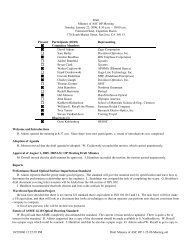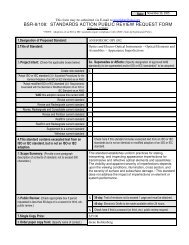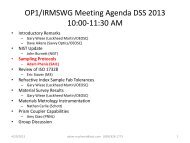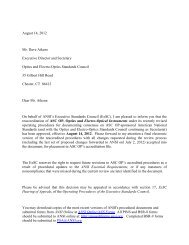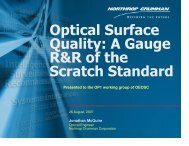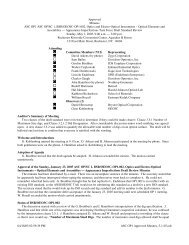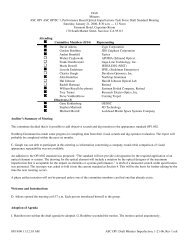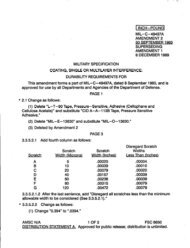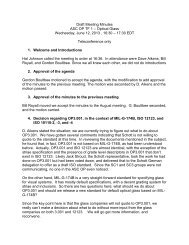INCH-POUND MIL-PRF-13830B 9 January 1997 SUPERSEDING ...
INCH-POUND MIL-PRF-13830B 9 January 1997 SUPERSEDING ...
INCH-POUND MIL-PRF-13830B 9 January 1997 SUPERSEDING ...
You also want an ePaper? Increase the reach of your titles
YUMPU automatically turns print PDFs into web optimized ePapers that Google loves.
<strong>MIL</strong>-<strong>PRF</strong>-<strong>13830B</strong><br />
3.7.10.2 Fractures and edge chips. Edge chips which do not encroach on the free<br />
aperture of the prism shall be allowable within the following limitations: The sum of<br />
the chip widths shall not exceed 30 percent of the length of edge on which the chips<br />
occur. Chips shall be measured from the bevelling edge, not from sharp edge; i.e. after<br />
bevelling and not before. Chips less than 1/2mm shall not be counted and not stoned;<br />
chips larger than 1/2mm shall be stoned. Encroachment of chips shall be measured<br />
on the faces of the prism from the bevelled edges. If the nominal length (measured to<br />
sharp corner before bevelling) of the shortest edge of the prism which is adjacent to<br />
any polished face is an inch or less, chips may encroach the faces 1mm; if said length<br />
exceeds 25.4mm chips may encroach 2mm. This shall be permissible provided that<br />
there are no edge chips which interfere with mounting or sealing and the chips do not<br />
encroach upon the free aperture. Fractures visible to the unaided eye on any surface<br />
or edge are not permitted.<br />
3.7.10.3 Drawing requirements. The deviation of angle errors, pyramidal error or<br />
error due to pyramid, spherical power, astigmatism, resolution, and image tilt shall be<br />
as specified on the drawings.<br />
3.7.10.4 Erecting prisms. Erecting prisms shall be inspected as specified in<br />
4.2.5.2.<br />
3.7.10.5 Reflecting surfaces - silvered or aluminized.<br />
3.7.10.5.1 Edges. The edges of partially silvered surfaces of ocular prisms shall be<br />
sharp and shall be free of irregularities when inspected with the aid of a magnifier of at<br />
least the power of the eyepiece of the instrument to which the prism pertains.<br />
3.7.10.5.2 Defects. Defects on reflecting surfaces appear the same as defects on<br />
other optical surfaces and shall be treated in the same manner as specified in 3.7.10.1.<br />
3.7.10.5.3 Aperture surfaces. Aperture surfaces of prisms through which light is<br />
to be transmitted shall be free from particles of silver or aluminum remaining from<br />
processing of other surfaces.<br />
3.7.11 Reticles.<br />
3.7.11.1 Surface quality. The surface quality shall be as specified on the drawings.<br />
When not so specified the surface quality shall be as specified for focal planes in<br />
3.5.5.3, except for zone sizes. The central zone shall be the central area, one half the<br />
free aperture in width, for reticles having reticle graduation extremities within this<br />
area, and those reticles having horizontal and vertical lines without graduations<br />
outside the area. Reticles having graduations outside the central area, one half the<br />
free aperture in width, the central zone shall be the central area, three-fourths the free<br />
9<br />
Source: http://www.assistdocs.com -- Downloaded: 2006-05-24T15:32Z<br />
Check the source to verify that this is the current version before use.



